


Henry Partleton (c1838)
If you've come to this page from the story of Henry Kemp Partleton (1814-1893), then apologies are due for a little repeated information at the beginning of this story.
Henry Partleton was born circa 1838 into the show business. His dad Henry Kemp Partleton (b1814) - comedian, dancer, musician, actor, singer - had performed on London stages, indeed at famous theatres, as a child. Henry's mum, Eliza Cooper, was also a versatile performer, actress and musician. After Henry's birth, his parents became travelling players at provincial theatres.
Henry's parents had been married in 1837 in Marylebone, London:

This year - 1837 - is significant, because it is the first year of a new law in England requiring all births, marriages and deaths to be registered at the General Register Office. Prior to this date, these records were held in the parish registers of the local church.
We're looking in detail into this because we can't find Henry's birth certificate, which should appear c1838. But it's just not there - which is actually very unusual, and it begs the question: was Henry born before the marriage of his mum and dad? Before 1837? Eliza was only 17 in 1837.
There are other possible explanations for the lack of a birth certificate. I've read that compliance was a little bit lax in that first year as people adjusted to the new legislation. Perhaps that's true. Also, we know that Henry Kemp Partleton and his wife Eliza were travelling players. They never stayed in the same place more than a few weeks. Perhaps registering the birth was just too difficult or inconvenient. Or they might have even been working abroad. It's possible. We need to do more research.
Moving on, we can't find Henry senior, Eliza, or Henry junior in the 1841 census. Very frustrating. Again, they might just be out of the country? Finally in 1851 we find young Henry. He's in Liverpool with his mum:
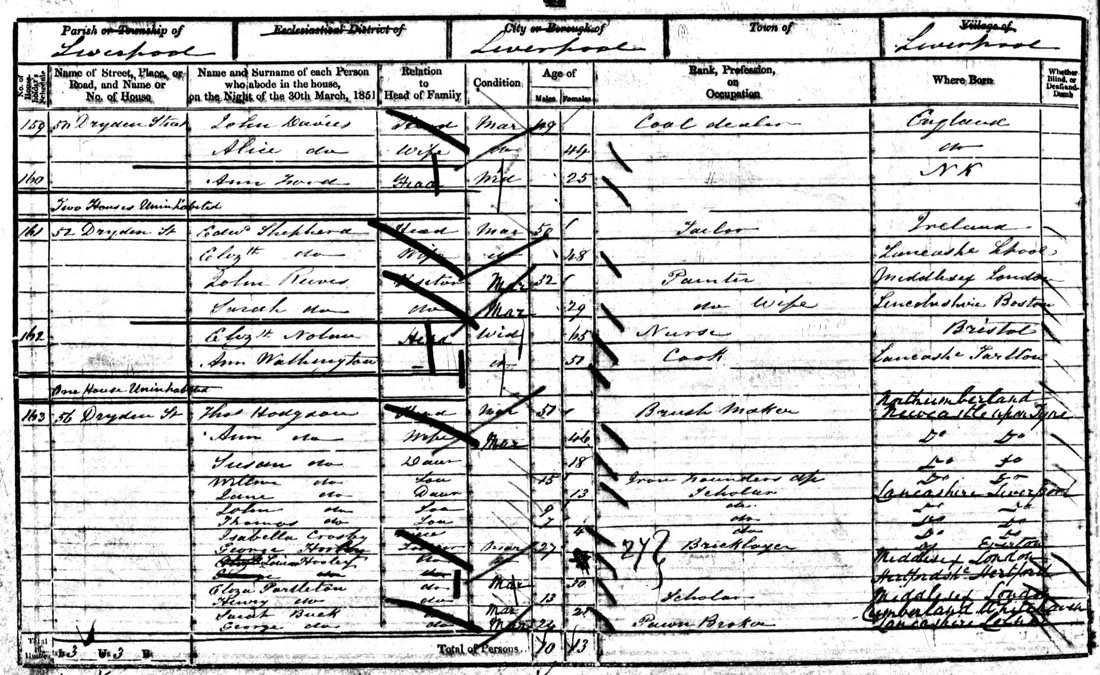
Since this is the only time we ever see Henry in Britain, we should explore his situation a little. On the day of the census, Henry's dad is lodging near Manchester, but Henry and his mother are lodging at Dryden Street which is not far from the centre of Liverpool:
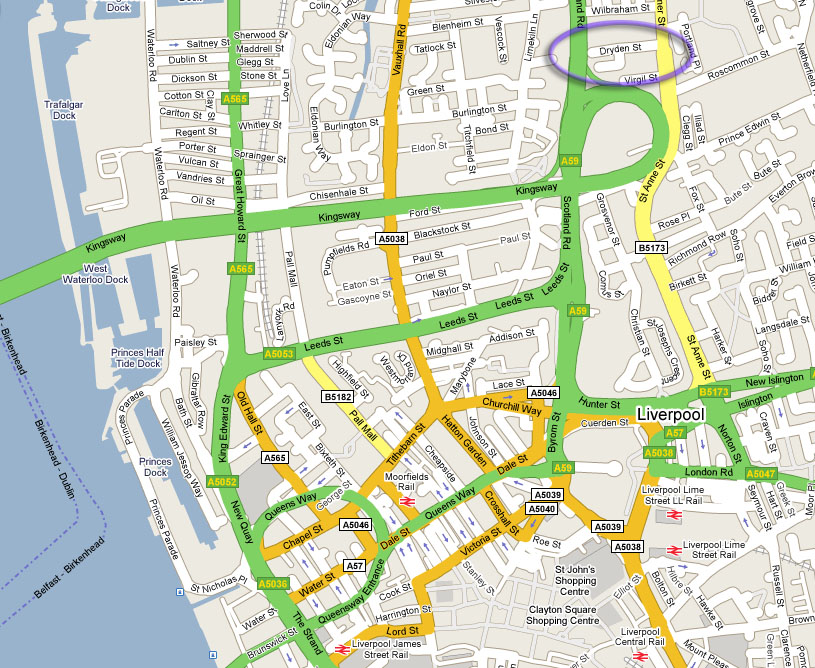
Henry's mum and dad are always, always, always on the move, from one gig to the next, from week to week.
It seems very likely that Henry, being dragged up and down the country, hither and yon, never went to school. His parents can both read and write, but he is illiterate. We are entitled to question, with some justication, whether his father Henry and mother Eliza are sufficiently attentive parents.
Anyhoo, let's have a close look at Dryden Street and see what clues it may have for us:

If you look at the 1851 census sheet, Henry and his mum are sharing lodgings at Dryden Street with bricklayers and brush salesmen, and we can see from the photo that these are humble abodes. Money is tight.
Here's another bit of Dryden Street nearly 100 years after Henry stayed there, a VE-Day party for all the kids in the street:
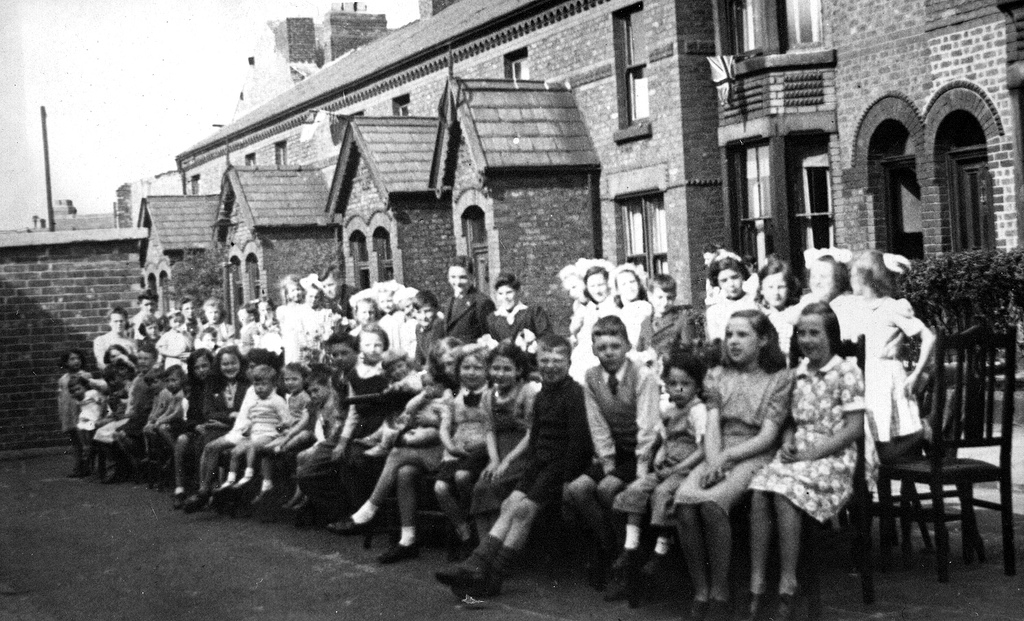
Back to Henry, I think it's a reasonable assumption that his dad - who had been a child performer in his youth - would probably have dragged him into the act. They played at tiny provincial theatres, sometimes in the back of pubs, in mining towns in the north of England, or - in the case of the photo below - iniDowlais, Wales:
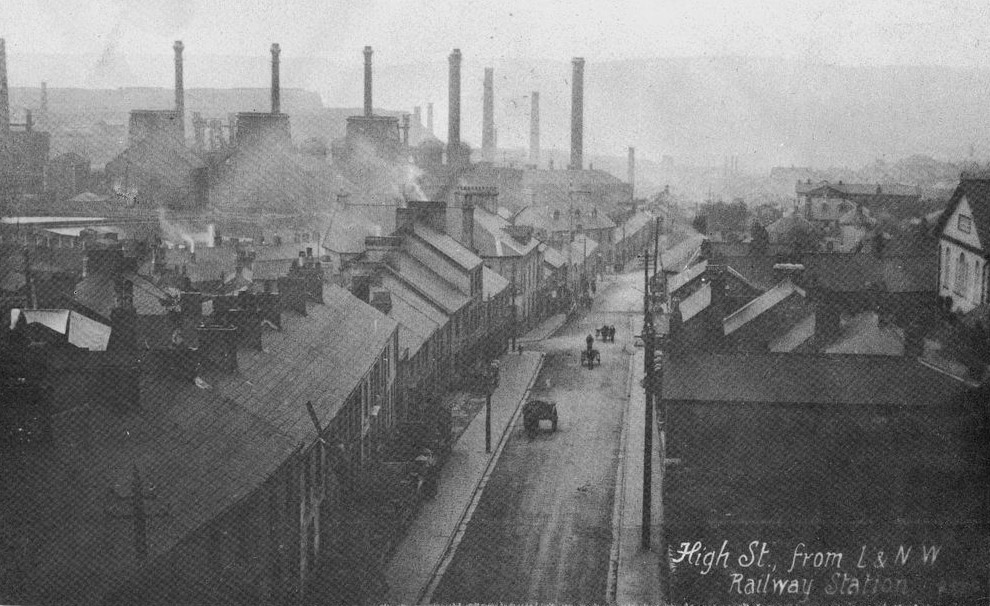
I'm setting the scene here, because it seems that young Henry decided that this was not the life for him, and who can blame him?
Consequently, by the time of the next census in 1861, Henry has left the smoke, soot, grime and leaden skies of industrialised Victorian Britain, and - thanks to the records accumulated by the Church of Latter-Day-Saints - we know exactly where he has gone; Barbados, circled in blue below:
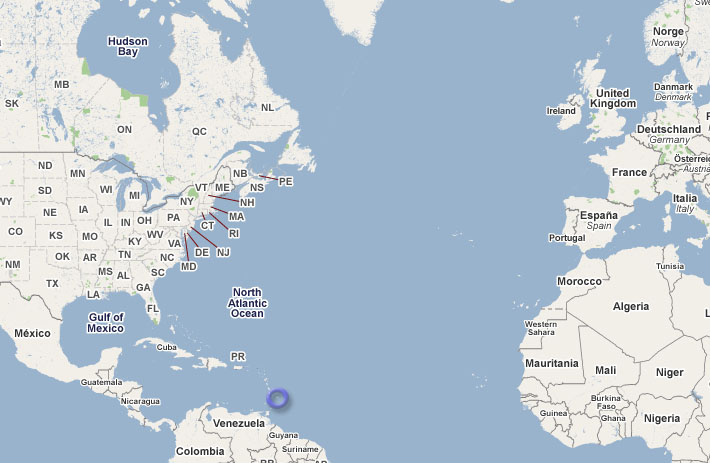
Henry's emigration to Barbados was not particularly unusual for a British citizen in the heyday of the British Empire. We don't know what exact year Henry arrived on the island - it was most likely around 1857 when he was about 19.
Thankfully, slavery had been abolished in Barbados 20 years earlier. A job abroad in the Empire for a British citizen could offer money, a nice house, servants and sunshine.

The stunning photograph above, taken in the 1880's in Barbados, shows that the abolition of slavery hadn't necessarily changed things very much. The pecking-order couldn't be more apparent. Field-workers, their black foreman - who looks like a man you wouldn't want to cross - their white supervisors and their kids.
But Henry didn't get a fancy job like one of the supervisors - in fact he ends up as a domestic servant / coachman.
In 1859/60 Henry got a young local girl, Selina Matthews, pregnant. Their child was Evelina Louisa Matthews; the child's surname at birth is Matthews since her mother Selina is not married. In fact Selina was only 14 or 15 when she became pregnant. We don't have baby Evelina's birth record but we do have her death, which we will come to shortly.
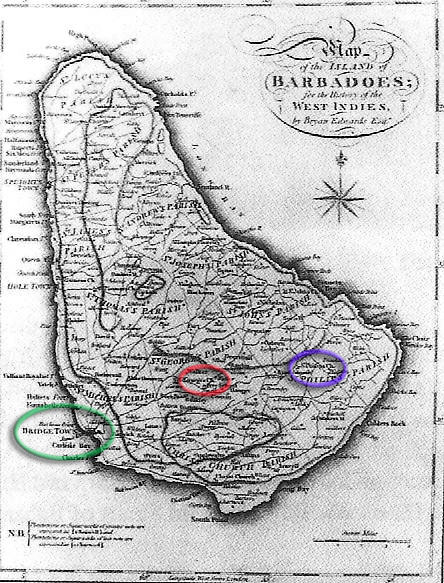
The child is born at Thorpes Cottages in the parish of St George, circled in red in the map above. Thorpes Cottages are still there today, close to the parish church, as we see in the satellite photo below:

The Cottages are still there in the parish of St George. If you need a nurse, you'll find two of them residing at Thorpes Cottages. I've blurred out the names, but if you are ever taken ill while on holiday in Barbados, you can look them up in the Barbados Yellow Pages:

In 1861 Selina becomes pregnant again, and the couple decide to get married:

Selina may be poor but she is literate, and signs with a pretty girlish curl in her capitals. And we see our evidence that Henry never went to school. He had spent his entire childhood on the move, week to week, never stopping, never resting, with his parents in their livelihood as travelling actors in England, scratching a living, though it seems from this certificate that his dad may have settled down for a while at this time as a hotel keeper. Henry signs with a cross. 'The mark of...'
There can be a tendency when researching family history to assume that everything in garden is rosy. But real life is not like that. Especially the life of young Henry Partleton, who seems intent on digging an ever-deepening hole which is to set his descendants on a crisis course for the next 100 years.
Selina's address is given as Crowther's Land. Henry and Selina are quite soon going to move in to this humble cottage with the mother-in-law, and probably with other members of Selina's family, because they are broke and have nowhere else to go - so let's investigate Crowther's Land:
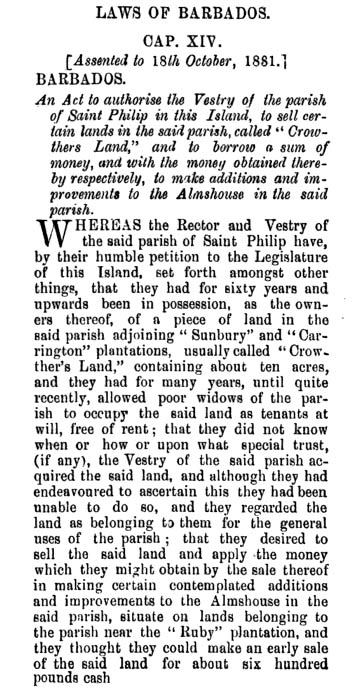
We learn some really useful stuff from this, which is an extract from a book called Laws of Barbados for Session 1881-1882.
Firstly, I'm going to infer, since the parish had "... for many years... allowed poor widows of the parish to occupy the land [ie Crowther's Land] as tenants at will, free of rent" , that Selina is from a very poor background and that her mum might be a widow. Selina's dad does not witness the marriage and Selina herself in later life ends up in the poorhouse, so this seems a distinct probability.
Secondly, we read that Crowther's Land adjoins the well-known Sunbury Plantation, circled in red below, and this enables us to zero-in very close to the exact location of Selina's residence, somewhere near to Six Road Crossing.

Above is a map showing the location of Sunbury Plantation House, circled green, and below we see what it looks like, as it is a tourist attraction in the present day. This 300-year-old building actually burned to the ground during a disastrous fire in 1995, but has been "meticulously restored", so - if Selina ever saw the 'big house' of her neighbourhood - then we may step into her shoes and cop an eyeful:

The wedding takes place in St Philip's church, the location of which we see circled in blue below. These places are all within walking distance - the island is only 15 miles across:

Below is a picture of St Philip's church, of the time when Henry lived in the parish, complete with palm trees in the distance; step into Henry and Selina's shoes for a tropical wedding in the heat of the Caribbean:

Here's the interior of St Philip's, built 1831, where Henry and Selina were married. The church was completely gutted by fire in 1977 but was restored:

We can see from the photo below of a wedding in the church in 1957 that the restoration was not particularly true to the original! This is the interior as seen by Henry and his [very] young blushing bride:
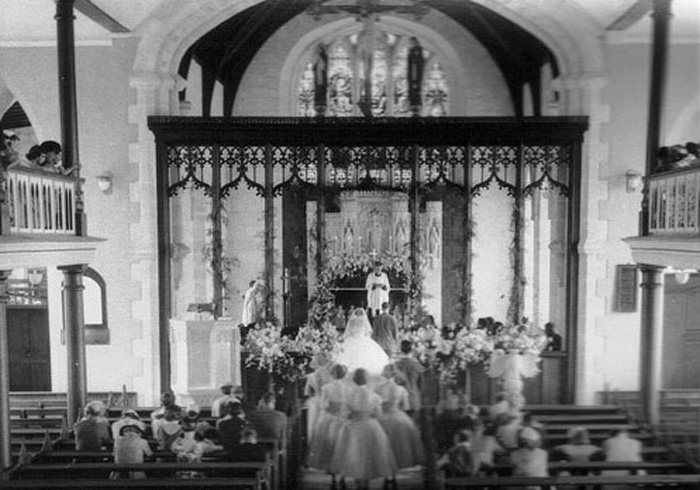
And here's the exterior.
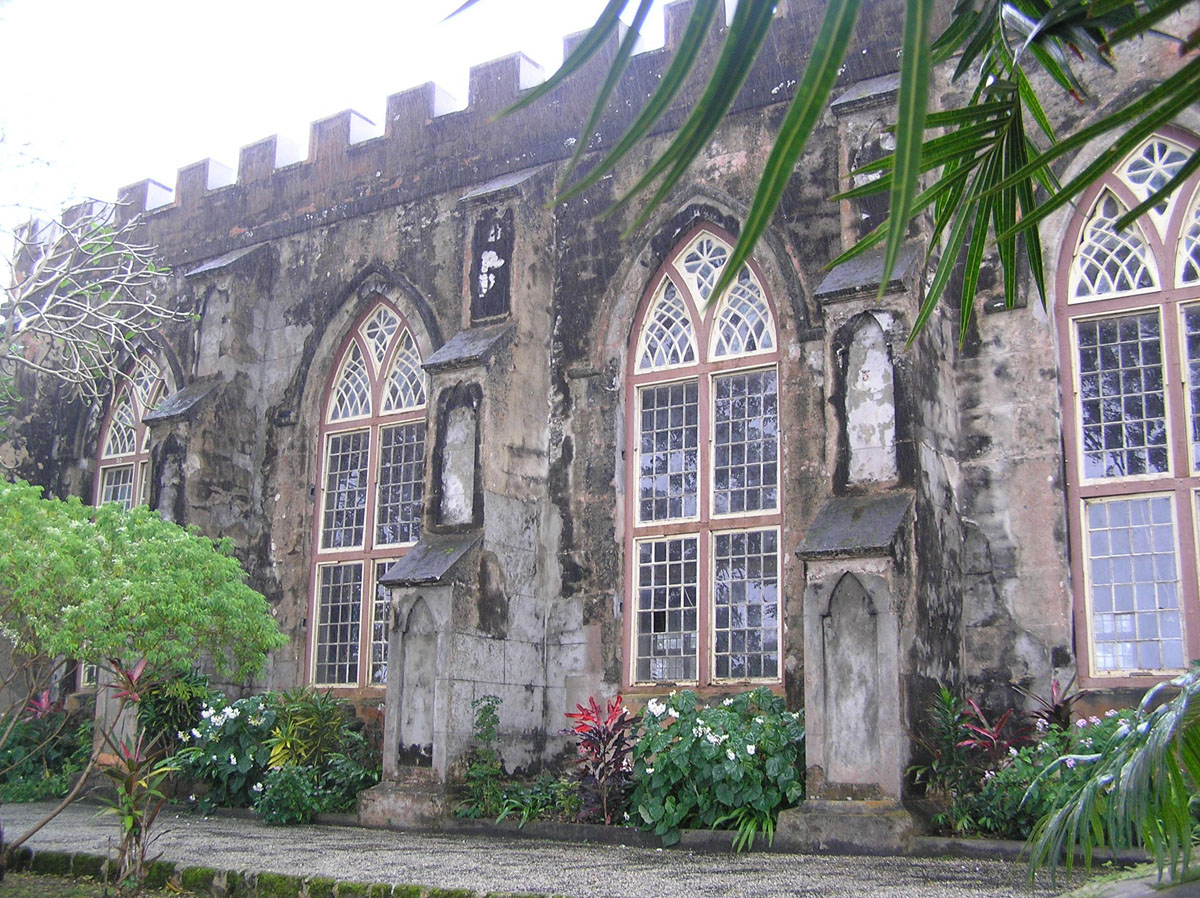
You may remember that Selina was pregnant at the wedding, and four months later, their second baby is born, Eliza Wilhelmina Partleton:

Henry and his wife Selina are still living in Thorpes Cottages. What we see below is the Stepney Plantation in the lush St George's Valley, not far from the house.

Henry's occupation was given as 'coachman' in his marriage record. We don't know where he worked, but it was probably in and around the stables of one of the grand plantations. I thought the above photo was a nice illustration of a plantation.
Below are some old buildings in St George's parish:
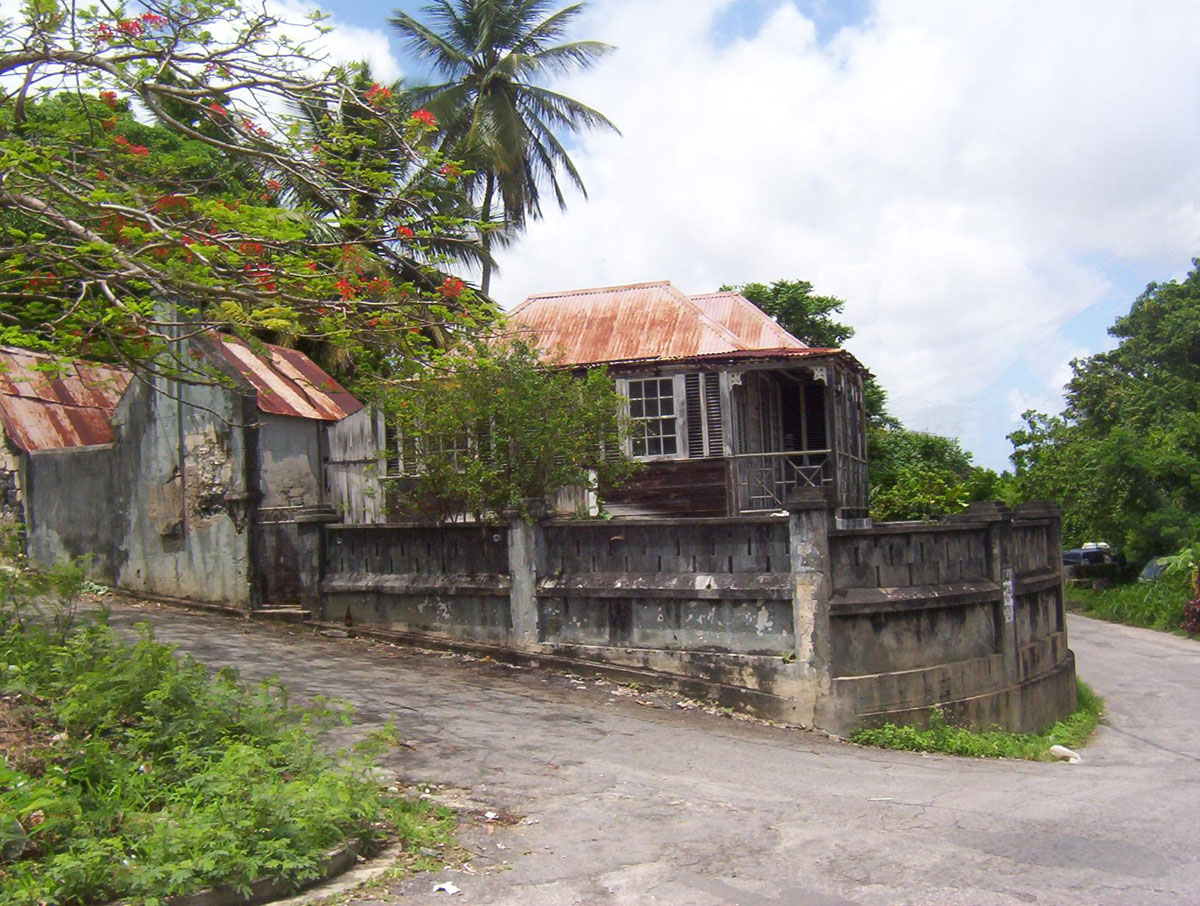
Two years on from the birth of their second child, Henry and Selina's first child, Evelina, dies. This burial information comes from David Partleton in New Zealand, who discovered, with the help of the Partleton Tree, that he is descended from Henry, and consequently engaged a researcher in Barbados to research the records there:
RL2/ 37/753 10 April 1863, Partleton, Evelina Louisa, of Crowther Land born at Thorpe Cottage, St George, buried at St Philip Parish Church, aged 1 yr 10 mths.
Little Evelina was buried in the churchyard of St Philip, where her parents had been married. The huge ancient tree below, which is in the cemetery of St Philip's church, would surely have been there 146 years ago at her funeral in 1863:

If we calculate Evelina's birth date from her age declared for her burial in April 1863, we come up with June 1861. This can't be right because we know for certain that her sister Wilhelmina was born on 26 October 1861.
So what's going on here? The significance of June 1861 is that this is the month when Henry and Selina were married. I'd be fairly sure that they are obscuring her real age, which is at least 6 months older, to hide Evelina's illegitimacy.
Even as Evelina is being buried in 1863, another daughter is being conceived:

The handwriting of the minister in the parish register gives us cause to squint our eyes. Is this little girl's name Julian? Actually, notwithstanding the scrawly handwriting, we know that it says Lilian. Full name Lilian Georgiana Partleton, and we know a whole lot about her later life, which we will come to; she has her own page.
And three years after Lilian, Selina has another daughter, Rosina:

We may note with a raised eyebrow that this time Henry is NOT specified as the father of Rosina. Where no father is named, this signifies that the baby is illegitimate. That's the rule in Parish Registers of the 1800's, and we've seen no exceptions to this in other registers.
So where's Henry? Has he died? Has he left? I've talked this over with Terry Partleton and the consensus is that young Henry Partleton, in the grip of poverty, illiterate, dwelling in a tiny charity house with his mother-in-law in the tropical heat, poor employment prospects, living in a strange land, married in haste, little kids screaming in his ears, has probably pulled up stumps and done a runner. Alternatively, it's quite possible that he has died.
So, to summarise the mess; in 1867, Selina has three little girls; Eliza aged 6, Lilian aged 3, and baby Rosina, and she's all on her own. How is she going to feed them?
And at this time, the records go silent... Until 19 years later, in the year 1888... another baby is born... but it's not Selina's... it's her daughter Lilian's:

Between 1867 and 1886 something has gone terribly wrong. We never hear any more of Henry Partleton. But after his departure things have not got better - indeed things have gone downhill, far, far downhill, into the darkness.
So I'll end the page for Henry Partleton here, for we have no more information about him. Henry has gone from the picture. If we are to move on with the story, we shall have to follow the fortunes of his daughter Lilian, whose life was among the toughest and most tragic of any person in the Partleton Tree. Click here to view this.
If you enjoyed reading this page, you are invited to 'Like' us on Facebook. Or click on the Twitter button and follow us, and we'll let you know whenever a new page is added to the Partleton Tree:
Do YOU know any more to add to this web page? Or would you like to discuss its contents?... why not send us an email to partleton@yahoo.co.uk
Click here to return to the Partleton Tree Home Page
